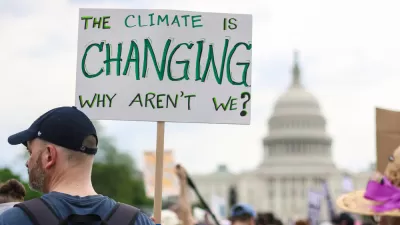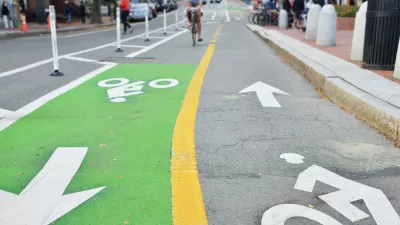In the current issue of Housing Policy Debate, Reid Ewing and Fang Rong argue that sprawling urban form contributes to higher residential energy use. Two responses -- one from Samuel Staley and another by John Randolph -- rebut the paper.
"While the impact of urban form on transportation energy use has been studied extensively, its impact on residential energy use has not. This article presents a conceptual framework linking urban form to residential energy use via three causal pathways: electric transmission and distribution losses, energy requirements of different housing stocks, and space heating and cooling requirements associated with urban heat islands. Two of the three can be analyzed with available national data.
After we control for other influences, residents of sprawling counties are more likely to live in single-family detached houses than otherwise comparable residents of compact counties and also more likely to live in big houses. Both lead to higher residential energy use. Because of the urban heat island effect, residents of sprawling counties across the nation on average pay a small residential energy penalty relative to residents of compact counties. Implications for urban planning are explored."
[Editors note: The following articles is in Adobe PDF format]
FULL STORY: The Impact of Urban Form on U.S. Residential Energy Use [PDF]

Alabama: Trump Terminates Settlements for Black Communities Harmed By Raw Sewage
Trump deemed the landmark civil rights agreement “illegal DEI and environmental justice policy.”

Planetizen Federal Action Tracker
A weekly monitor of how Trump’s orders and actions are impacting planners and planning in America.

The 120 Year Old Tiny Home Villages That Sheltered San Francisco’s Earthquake Refugees
More than a century ago, San Francisco mobilized to house thousands of residents displaced by the 1906 earthquake. Could their strategy offer a model for the present?

Ken Jennings Launches Transit Web Series
The Jeopardy champ wants you to ride public transit.

BLM To Rescind Public Lands Rule
The change will downgrade conservation, once again putting federal land at risk for mining and other extractive uses.

Indy Neighborhood Group Builds Temporary Multi-Use Path
Community members, aided in part by funding from the city, repurposed a vehicle lane to create a protected bike and pedestrian path for the summer season.
Urban Design for Planners 1: Software Tools
This six-course series explores essential urban design concepts using open source software and equips planners with the tools they need to participate fully in the urban design process.
Planning for Universal Design
Learn the tools for implementing Universal Design in planning regulations.
Clanton & Associates, Inc.
Jessamine County Fiscal Court
Institute for Housing and Urban Development Studies (IHS)
City of Grandview
Harvard GSD Executive Education
Toledo-Lucas County Plan Commissions
Salt Lake City
NYU Wagner Graduate School of Public Service




























